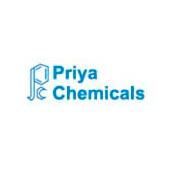Management of mycotoxicosis in poultry
Storage of high moisture feed is one of the major problems for production of aflatoxins. Storage of feed for a month with 13% moisture was not safe to prevent aflatoxin (AF) production. However, the production of AF at 13% moisture level can be completely inhibited by adding fumaric acid @ 0.20% or citric acid @ 0.45%. At 15 and 17% moisture level in feed, more than 0.50% of fumaric acid or citric acid is required for complete inhibition of biosynthesis of aflatoxins. Fumaric acid was more efficient to prevent mould growth in comparison to citric acid.
Is fumaric acid more beneficial than propionic acid to reduce adulation in feed? Dr. Abdullah Ansari.
Md. Abdullah Ansari, Propionic acid and fumaric acid have almost equal efficacy in preventing biosynthesis of aflatoxins in feed. However, small variations may occur due to method followed in estimation. Overall if we see, propionic acid is little bit more efficacious in preventing biosynthesis of aflatoxins in feed.
While propionic acid can assist in controlling mold growth, it's important to know that mycotoxins are already formed and exist in the feed. Mycotoxins need mycotoxin binders to eliminate them and hence it's an insurance to a clean feed since the sampling procedure for toxin binders is erroneous and involves large quantities, if sampling it's essential to incorporate a good binder.
Dear Abdul Matin, Propionic acid is used to inhibit fungus growth. It has nothing to do with the mycotoxin already present in the feed. To detoxify the mycotoxin we have to use toxin binder. I have developed two mycotoxin binders viz. Mycodetox B1 and Mycodetox B2 based on our decade's intensive research efforts. Publications will be available soon.
Ram Singh,
that is precisely what I meant. To reduce the growth of fungus propionic acid is used .ie to say mycotoxins being secondary metabolite of organisms of the fungus growth has to be controlled by propionic acids and mycotoxins already prevailing by mycotoxin binders.
Mycotoxin molecules are destroyed in high temperature. We need food additives for fungi grows controlling in animal & poultry feed. Food additives usually are used from inorganic substrates example bentonitte, Na Cl and etc. The first step is prevention of fungi growing with moisture decreasing.
Bentonite and HSCAS are good mycotoxin binder. Can anyone share the information about porosity of bentonite? Because the less the porosity the better the nonbinding capacity with nutrients.
In my laboratory, two mycotoxin binders namely Mycodetox B1 and Mycodetox B2 were developed after a decade's intensive research efforts. Both these binders are equally efficacious in ameliorating aflatoxicosis. These binders completely ameliorated the adverse effects of aflatoxicosis in chickens, quails and turkeys. Research articles will be available soon.
Management of mycotoxins starts with feed handling procedures which prevents high moisture content hence minimizing mold growth. Use of binders comes after minimizing mold growth in feedstuff. Thus, prevent the carry-over to products which are human food. Are these binders not an issue to public health in the long run?
Management of mycotoxicosis starts from the field operation itself. If you detect mycotoxins in feed use the suitable toxin binder. I have also developed two mycotoxin binders viz. Mycodetox B1 and Mycodetox B1 for poultry. The efficacy of both the binders was tested in chickens, quails and turkeys. Both the binders completely ameliorated the adverse effects of aflatoxicosis in tested species and were equally efficacious in ameliorating aflatoxicosis. The research articles based on these binders will be available online shortly.
Ram Singh
I should start earlier. We have detected (not alone) that the most important toxin regulating agent is resistance, About 80 % of the corn hybrids and wheat cultivars has closely related data between resistance (infection severity) and toxin contamination. The rest are toxin over producers, e. eg they produce even several times toxin more than could be explained from the severity.
The other side is also true, there are higly infected genotypes with significantly lower toxin than anticipated. As we have no full resistance to toxigenic fungi in our crops, under epidemic conditions no zero can be anticipated, but in maize for example, 2.3 ppb and eight hundred at another hybris is fact.
This means that with a highly susceptible hybrid or cultivar you have no chance with toxin binders and antibiotic treatment. QAs between commercial hybrids and wheat cultivars we hav 10-20 fold differences in toxin production, you should check forst the plant material. When it is OK, you can go on and if you have a low lwvwl toxin contamination, you can balane it with toxin binders or antibiorics or bot, but the chance will be much better not to kill your animals. See: Mesterhazy et al. 2015 Agricultiral Sciences, 2018. Wolrld Mycotoxin Journal, 2018 Toxins for further information). Another thing is the storage, an often debattted problem. So your peasants or grain producers must grow only medium or highly resistant cultivar for animal feed. This is a precondition is also for human food supply.
Even you store in excellent quality at harvest, during bad storage conditions and treatment you might have high or very high toxin contamination. For this reason before use a toxin check is routine work and controlling storage conditions by sensors connected to your computer you see what is happening and you can intervene when something happened.
I wish you good luck.
Greetings
Akos Mesterhazy
Dear Abdul Matin, these are not available in the market, once the paper is published, you can also prepare on your own.
Are they bio product? A company in Nigeria wants to be sole Agent for biopestiides, biostimulants and odor control products.
Please contact rhizucor@gmail.com. immediately
Dear Stephen Fapohunda, once the research article is published, I will upload it on Engormix.
The most important management tool is to educate owners of impacts in poultry deaths due to mycotoxins in feed.
I traveled to many countries in my life and one of the major problems is using the most appropriate absorbents in the end product.
Diseases are of great impact as well, just that they are poorly recognized in the field.
Adapting a HASAP program or a similar type of program, that can constitute the semi elimination of the problems that occur in poultry









.jpg&w=3840&q=75)











.jpg&w=3840&q=75)